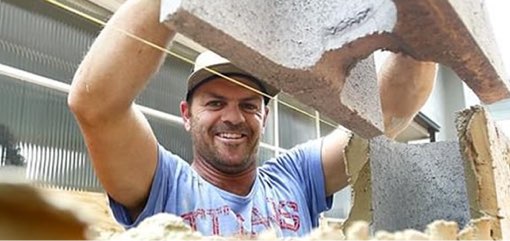Bricklaying Course Should You Take: Some of the Options for You
When compared to the other sub-divisions of the construction industry, bricklaying stands out as a distinct and valuable profession. They perform tasks comparable to those of masons and other skilled artisans, but with an emphasis on ensuring that masonry is as robust as humanly possible. They also have the duty of maintaining the structure and fixing any damage that may have occurred. Physically demanding as construction work is, the sense of satisfaction that comes from seeing a building project through to completion may make the sweat and blood worth it.
Career Choice That Makes Sense
A bricklayer's career may officially begin after they've finished their required training. Most people who enter the construction profession as bricklayers end up excelling at something else. In this industry, there are many doors open to someone just starting out. Bricklaying is intertwined with many other construction trades, including stone masonry, carpentry, building project management, and administration. As such, it's important to note the importance of bricklayer apprenticeship programs.
The first step toward a successful career as a bricklayer is to learn everything you can about the trade and its requirements. This article will teach you the fundamentals of climbing the professional ladder as a bricklayer and the many educational paths that might lead to a successful career in the field.
What sort of training and how many years of experience are needed to become a bricklayer?
CSCS cards are not required by law for contractors or businesses, although it is common practice for employers to require them. That's because CSCS certifications are widely accepted and recognized in the business world. In addition, ensuring that all construction workers have a valid CSCS card ensures that they have the right skills, which raises standards for health and safety on the job site and improves the quality of the building being built.
There is information about CSCS available here that you may find useful.
There are two possible routes into the bricklaying industry: apprenticeship programs, in which workers learn on the job, and direct entry, in which workers must start at the bottom and work their way up. Unfortunately, these constraints mean they'll always need a qualification before they can work on major construction projects. Only then will they be allowed to proceed with their objective. This means that learning bricklaying as a first trade is more likely to pay dividends than learning another. This adjustment may make it easier for certain individuals to manage the pressure of trying to rush through a certification process. Specifically, it functions admirably as a means of educating future professionals in a certain field via apprenticeship. Choosing the Trade apprenticeships is a good option here.
Improvements in physical health and fitness may be achieved via a variety of exercises.
Bricklaying is a labor-intensive job that calls for plenty of muscle. Because of the long hours and heavy lifting required by bricklayers, it is essential that they be in peak physical condition. They also need to be good with their hands. Another perk of working in this field is that it encourages people to keep up their level of physical fitness and health throughout their working lives.
An overwhelming need for contact with nature
It's important to have a good outlook and see the bright side of things while working outside. Those who are frightened of heights would be well to look elsewhere for employment, since bricklayers often work on tall buildings and structures.




Comments
Post a Comment